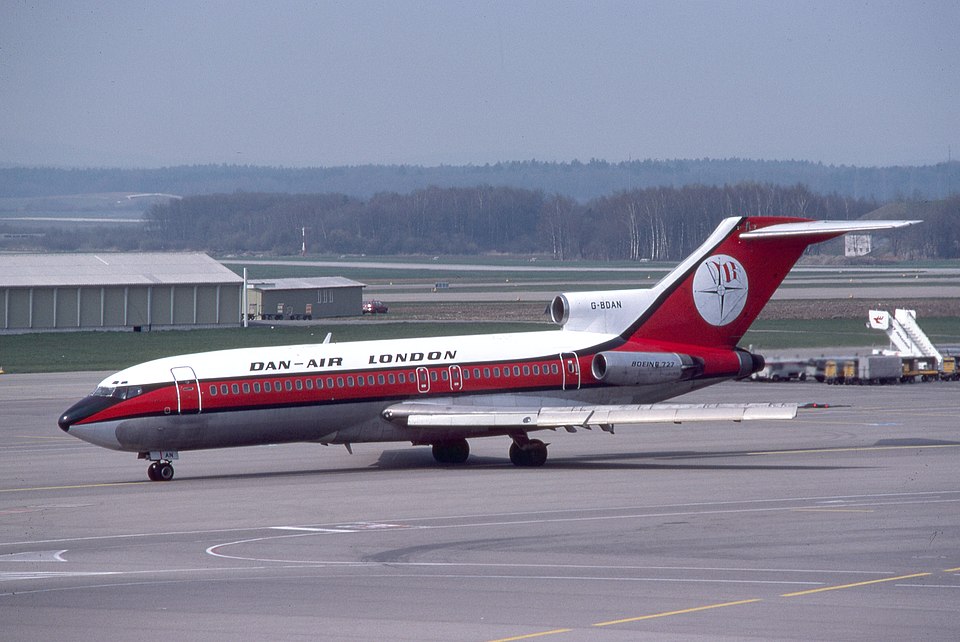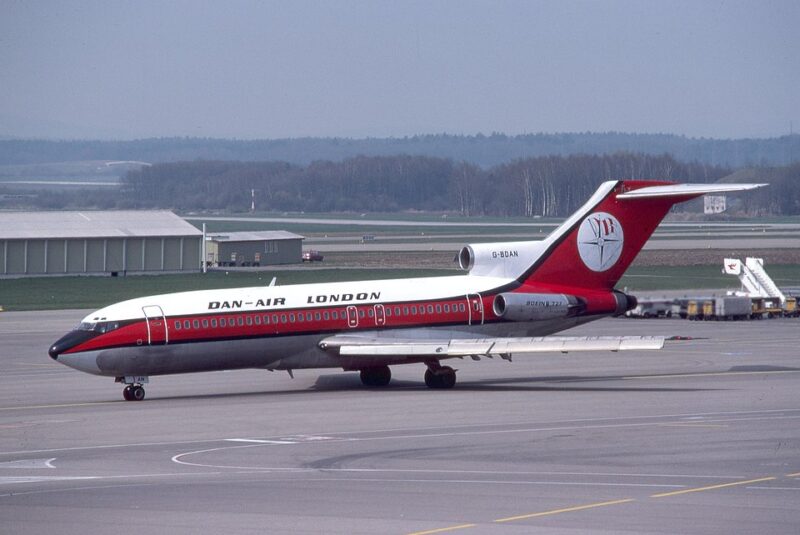The Chilling Final Moments Of Dan-Air Flight 1008
On April 25, 1980, Dan-Air Flight 1008 (Boeing 727-46 – G-BDAN) departed Manchester Airport bound for Tenerife, packed with British holidaymakers seeking sun in the Canary Islands. But just hours later, it would become the deadliest disaster in British aviation history, killing all 146 people on board.
The Setup
Dan-Air was then the UK’s largest independent airline, and Flight 1008 to Tenerife North Airport was a routine charter. Three experienced pilots were in the cockpit: Captain Arthur Whelan (50), First Officer Michael Firth (33), and Flight Engineer Raymond Carey (33), along with five flight attendants.
Tenerife North Airport, formerly Los Rodeos, is a notorious challenge for pilots due to its high altitude and frequently low visibility. On that day, shifting wind conditions required landings on Runway 12 rather than the more commonly used Runway 30.
A Catastrophic Chain Of Misunderstandings
At 1:00 PM local time, Flight 1008 began its descent. Air traffic controller Justo Camin, working without radar, was managing traffic procedurally. Another plane was also approaching Runway 12, preventing Camin from clearing the standard descent route.
Camin decided to place Flight 1008 in a holding pattern. But since none existed for Runway 12, he made one up. He instructed: “Standard holding pattern overhead Foxtrot Papa, inbound heading 150, turn to the left.” Critically, the phrase “turn to the left” was misunderstood. Camin meant for the crew to enter continuous left turns (“turns to the left”), but without the plural, it was interpreted as a one-time left turn to heading 150.
The Fatal Descent
Captain Whelan acknowledged the instruction but didn’t read it back, and the crew made a single left turn. They were now flying directly toward the mountainous terrain of La Esperanza. The minimum safe altitude in that area was 14,500 feet. The flight was at just 5,000 feet.
CVR recordings later revealed the crew’s unease:
- “Bloody strange hold, isn’t it?”
- “It doesn’t parallel with the runway or anything.”
Moments later, the terrain warning system sounded: “Pull up! Pull up!” Captain Whelan initiated a sharp right turn. But this last-ditch maneuver proved fatal.
“Let’s get out of here,” Flight Engineer Carey pleaded.
“Bank angle, bank angle!” Carey warned again, before the recording cut out.
Tragedy On La Esperanza
At 1:21 PM, Dan-Air Flight 1008 slammed into the mountain just 92 feet below the summit. The aircraft disintegrated, scattering debris and igniting small fires. All 146 people onboard died. Not a single intact body was recovered.
Who Was To Blame?
Spanish investigators faulted the Dan-Air crew for not clarifying instructions and for misinterpreting the holding pattern. British investigators pushed back, arguing that ATC should never have used improvised procedures or cleared descent to just 5,000 feet in mountainous terrain. The standard minimum safe altitude was at least 7,000 feet.
A single missing letter — “turn” instead of “turns” — triggered a cascade of miscommunications that led to Britain’s deadliest air disaster.
The Aftermath
Dan-Air survived the crash and continued operations until being absorbed by British Airways in 1992. But Flight 1008’s legacy endures, marking a turning point in aviation safety. It reinforced the critical importance of:
- Standard phraseology
- Read-back requirements
- Avoiding ad hoc air traffic procedures
On the 45th anniversary, the tragedy of Flight 1008 remains a somber reminder of how precision in aviation is measured in lives.

